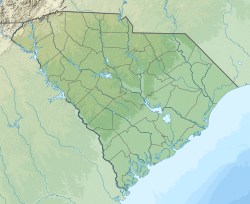History
The mill was built in 1959. [7] Prior to New Indy buying the mill, it was owned by Bowater. [3] Schwarz Partners [1] and New Indy purchased the site from (Bowater's successor) Resolute Forest Products in 2019 [8] and switched activities away from bleached paper towards unbleached pulp. [3]
In 2020, the mill's owners were the subject of litigation by residents suing for damages they linked to odors from the plant. [2] Local residents claimed that the mill's emission caused headaches, nose bleeds, and nausea. [9] By 2021, over 30,000 public complaints had been made about the smells from the mill. [8]
The Environmental Protection Agency fined the owners $1.1 million relating to emissions of fumes from the plant. [2] In 2022, mill manager Tony Hobson admitted that "We let the community down from an overall standpoint ...We started up. We ran into some issues at start-up and that ended up cascading into more than what we had hoped for." [6] In 2022, dioxins were identified in four 1960s-built [3] waste sludge lagoons at the mill. [2] An engineering report by S&ME Inc states that leaks from the lagoons seep into the adjacent river's embankment and that a repair was necessary. [3] Owners acknowledge the presence of dioxins in the lagoons, noting that this is a legacy of activities of prior owners. [3]
The mill is featured in the 2015 book The Slain Wood: Papermaking and Its Environmental Consequences in the American South written by UCLA law professor William Boyd [3] In the book, Boyd advocates for the mechanical removal of the sludge from the lagoons. [3] and encouraged the site's current owners to solve the problems they inherited with their purchase of the mill. [3]
This page is based on this
Wikipedia article Text is available under the
CC BY-SA 4.0 license; additional terms may apply.
Images, videos and audio are available under their respective licenses.

